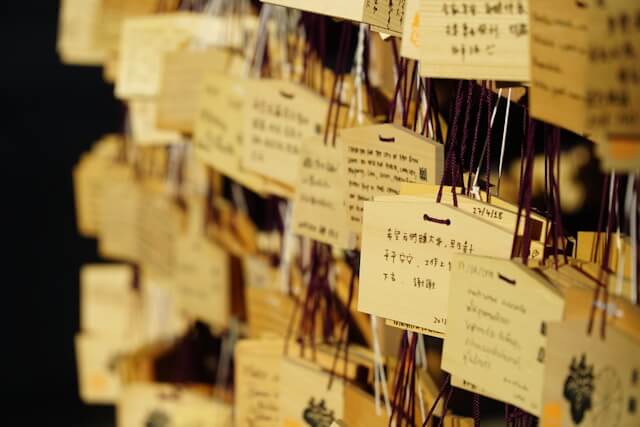
Introduction
In this blog post, we will learn how to use といい (to ii) to express hopes or wishes for something good to happen. This is a helpful way to wish someone good luck or hope for good things for yourself.
What It Means
You can use the present tense short form of a verb + といいですね (to ii desu ne) (polite) or といいね (to ii ne) (casual) to wish for something good to happen to someone else. It’s like saying, “I hope this goes well for you.”
When you want to hope for something good for yourself, you can use といいんですが (to ii n desu ga) (polite) or といいんだけど (to ii n da kedo) (casual). These forms sound softer and express a little uncertainty, like “I hope this works out for me, but I’m not sure.”
When You Use It
Use these phrases when you want to express hope for something, but it’s out of your control. When you use といいですね (to ii desu ne) or といいね (to ii ne), you are wishing for something good for someone else. When talking about yourself, you use といいんですが (to ii n desu ga) or といいんだけど (to ii n da kedo) to express hope for your own situation politely and gently.
Examples
Here are some examples of how to use these phrases:
For someone else:
- いいアルバイトが見つかるといいですね。(ii arubaito ga mitsukaru to ii desu ne)
- I hope you find a good part-time job.
- 雨が降らないといいね。(ame ga furanai to ii ne)
- I hope it doesn’t rain.
For yourself:
- 日本語の試験がやさしいといいんですが。(nihongo no shiken ga yasashii to ii n desu ga)
- I hope the Japanese exam is easy.
- 7時の電車に乗れるといいんだけど。(shichi ji no densha ni noreru to ii n da kedo)
- I hope I can catch the 7 o’clock train.
Note
These phrases are used to express hope for things outside of your control. If you’re talking about something you can control, such as your own plans, use the potential form of the verb instead.
For example:
- 日本に行けるといいんですが。(nihon ni ikeru to ii n desu ga)
- I hope I can go to Japan.
If you’re hoping someone else will do something for you, use てくれる (te kureru) before といいんですが (to ii n desu ga):
- ソラさんが来てくれるといいんですが。(Sora-san ga kite kureru to ii n desu ga)
- I hope Sora comes.
Conclusion
To ii is a polite way to express hopes and wishes in Japanese. Whether you’re wishing for someone else’s good fortune or your own, using these phrases can help you sound natural and considerate in your conversations.
For a deeper understanding of “to ii”, “Japanese Sentence Patterns for Effective Communication“ by Taeko Kamiya is a great resource. It offers clear explanations and practical examples, helping you improve both your speaking and writing skills. Check it out for more insights!



